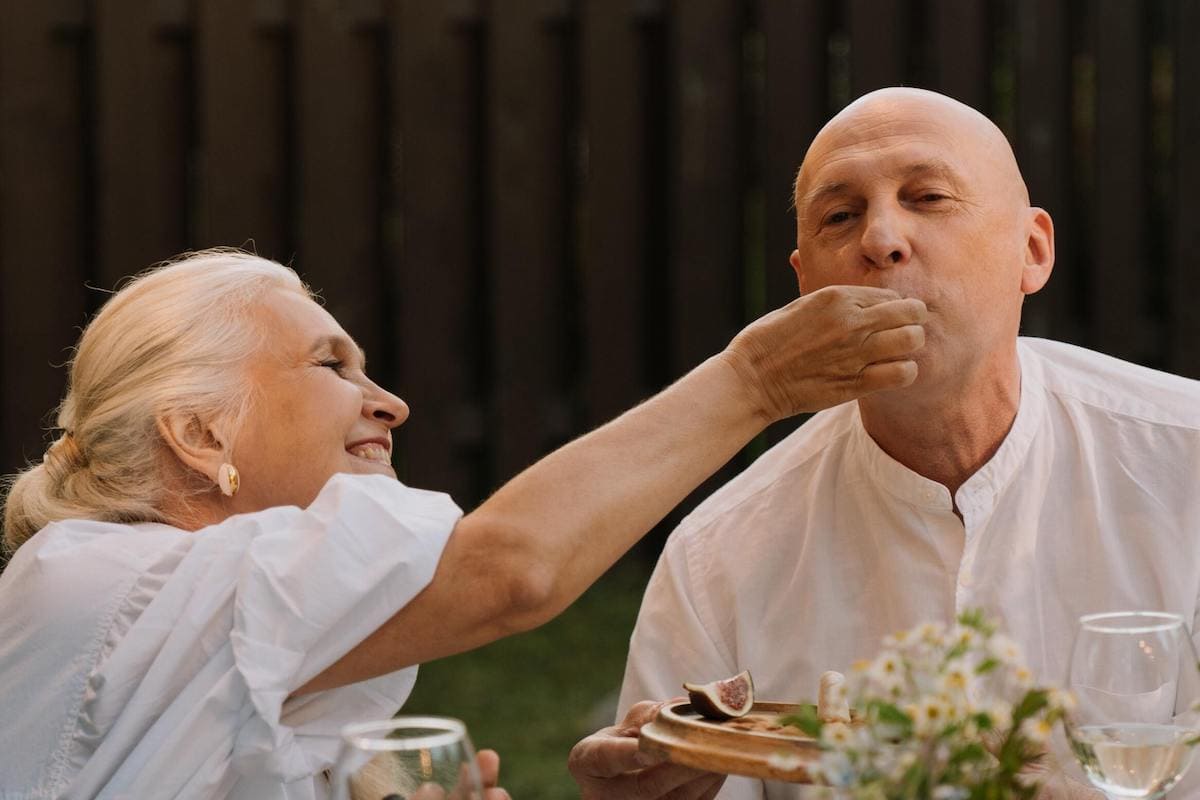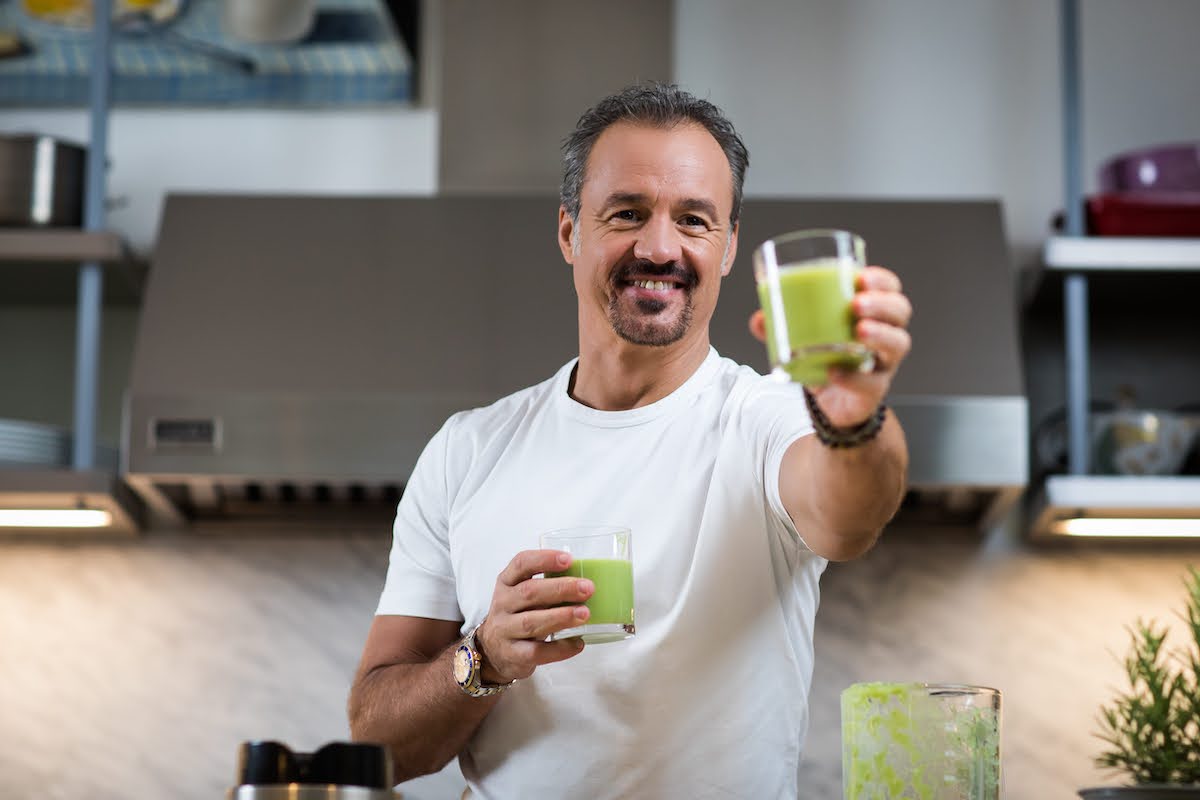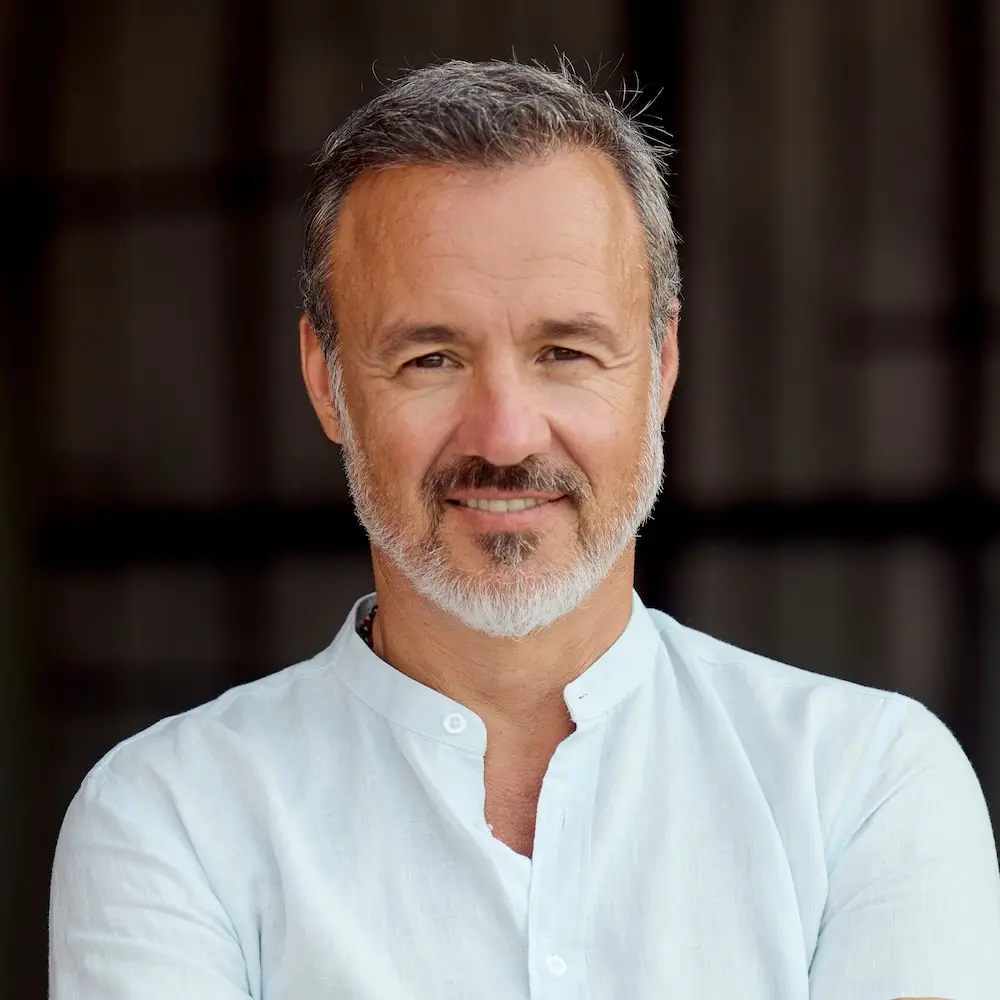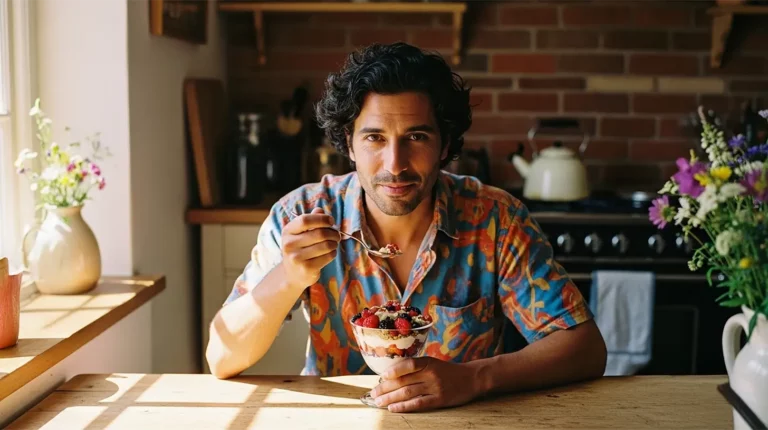Cut out the sugar, get more calcium, eat your veggies, don’t forget your vitamins… It sounds more like a dietary checklist for young children than for older adults. And with all the information out there on healthy eating for seniors, for sure, the sheer amount can get overwhelming.
So what should (or should you not) eat in your golden years? Are there factors that nutrition for older adults? Is there anything additional you can do for vitality and longevity? And if you’re the child or grandchild, how can you be a positive influence food-wise?
All great questions that require the help of WILDFIT® founder Eric Edmeades to answer. Taking insights from an exclusive interview as well as from his WILDFIT Quest on Mindvalley, here’s a mini guide to inspire a new understanding of eating well as you age.
What Is the Diet Quality for Seniors Nowadays?
With all the processed foods, genetically modified crops and animals, diet trends (and even the anti-diet culture), it’s no surprise that the quality of healthy eating has deteriorated, what more for older adults. So it begs the question, are they getting the proper nutrients that their bodies require?
Here are some data that look into this issue:
- Poor eating habits. A cross-sectional study suggests those 65 years or older aren’t getting the key food components and nutrients that of an “ideal” diet. Between 2001 and 2018, there was a significant increase in poor eating habits from 51% to 61%.
- Consumption of “ultra-processed” foods. Another research also found that, over the past 20 years, the intake of “ultra-processed” foods has continuously increased across all age groups in the US. This includes frozen pizza, soda, fast food, sweets, salty snacks, canned soup, and breakfast cereals — all of which contribute to poor diet quality and a higher risk of many chronic diseases.
- Food insecurity. In a national survey by Alignment Healthcare, this is highlighted as one of the top three barriers for that age group, chalking it up to the rising costs, physical difficulties in preparing their own meals, lack of reliable transportation, and more. Additionally, it reported that 15% anticipated struggling to put healthy food on their table in the next year.
- Food isn’t a priority. Another survey by Gallup and West Health shows that older Americans are sacrificing basic necessities, like foodstuff, to afford health services. It found that 9% of adults aged 65 and older reduced spending on food.
Poor diet quality can burden anyone’s health, specifically older adults whose immune systems don’t respond as robustly as their younger counterparts. As Eric says in the WILDFIT Quest, “When somebody is sick or they’re in pain, there are, very often, things they could have done to prevent that sickness or prevent that pain.”
So the moral of the story? Healthy eating should be at the top of everyone’s priority list.
Why Is Healthy Eating Important for Seniors?
It goes without saying that a well-balanced diet — along with physical activity and proper sleep — is the foundation of your well-being, regardless of age. Healthy meals consist of whole-food sources of essential vitamins, minerals, fats, and amino acids.
Together, these foods provide nutrients to support your day-to-day living and improve your way of life. Some (but not all) of its functions include:
- Protecting your cells from damage and toxins as well as repairing them
- Fueling your body
- Keeping your bones strong
- Promoting optimal body weight
- Helping transmit nerve signals
- Promoting a healthy immune system
- Assisting in disease prevention
Without a healthy diet or if you have a high consumption of processed foods, saturated fats, and alcohol, you might compromise any of these essential functions.
Your health is far more dependent upon you getting enough of the good stuff than it is on you eliminating the bad stuff.
— Eric Edmeades, founder of WILDFIT® and trainer of Mindvalley’s WILDFIT Quest
The reality is, nutritional requirements change as you grow. But a varied diet that includes plenty of nutrient-dense foods is recommended for everyone, no matter your age.

3 Common Myths About Senior Nutrition
Information is often thrown around like confetti. Some are traditional and some are modern. So how can you be sure which are just tall tales and which have merit?
When it comes to healthy eating for seniors, here are three common myths debunked:
Myth 1: You can’t strengthen the immune system
As you age, your immune system becomes slower to respond. There are fewer cells and antibodies produced to fight off harmful substances and as a result, your body may heal more slowly.
Plus, medical problems ranging from high or low blood pressure to obesity to anxiety can be factors that affect a healthy diet. That, in turn, can result in the decline of the quality of your life.
While aging is inevitable, there are ways you can support your immune system, including what you consume. And that includes foods rich in protein, zinc, and vitamins A, C, and E, as recommended by the American Academy of Nutrition and Dietetics.
What Eric has to say about the immune system: “Can you weaken the immune system? Sure. You could smoke, you could drink excessive amounts of alcohol, you could eat phenomenal levels of sugar, you could allow a huge amount of stress… So if you can weaken [your immune system], you can strengthen it.”
Myth 2: Dairy is a great source of calcium
It’s common knowledge that calcium plays an essential role in the body’s function. With aging, calcium levels gradually dwindle, increasing the risk of fractures, osteoporosis, and diabetes.
We’ve long been taught that one great source of calcium is dairy — milk, yogurt, cream, butter, and cheese. According to the National Institutes of Health, in the US alone, approximately 72% of calcium intake comes from dairy products as well as foods with added dairy ingredients.
Here’s the kicker: the majority of us are sensitive to dairy. Not only is dairy known to cause inflammation in the body, but the truth of the matter is the human ancestral diet just isn’t built to be able to consume the high amounts that are in our foods today.
While dairy may not be the best source of calcium, there are several calcium-rich foods that will definitely support healthy eating for seniors.
What Eric has to say about dairy: “Advertising standards in various jurisdictions made them take [the “Milk, It Does a Body Good”] advertisement off the air because there’s no proof whatsoever anywhere that milk does a human body good any good at all.”
Myth 3: Only drink water when you’re thirsty
When you feel parched, it’s your body’s way of signaling that it’s dehydrated. And when it’s in that state, it’ll have difficulty functioning at peak capacity.
Dehydration can affect you not only physically but also emotionally and mentally. You may feel dry mouth, fatigue, dizziness, muscle cramps, confusion, delirium, weakness, loss of appetite, crankiness, anxiety, and so on.
The thing is, as you age, you may not be able to sense thirst as efficiently, according to the Cleveland Clinic. So you may not realize when your body needs its fluid intake, putting you at risk for dehydration.
What Eric has to say about drinking water: “In the past, most of our foods were water-rich. Today, most of our foods are full of things like salts, sugars, and chemicals and are absent of water. Then, we don’t drink enough water to deal with that, and we end up with, frankly, dehydration. And so it’s really, really important that we drink a lot of water.”
3 Healthy Eating Tips for Seniors
Aging isn’t as bad as some people make it out to be. In fact, aging gracefully is the new black. And WILDFIT can help support the lifestyle you need to do so.
WILDFIT is less about meal planning concepts that suggest that you should “eat this and avoid that.” Rather, it helps you understand the psychology of your eating habits, helping you rewire your brain to eat the foods your body needs. The idea is to get you to want to eat the good stuff and naturally crave less of the bad stuff.
Your health is far more up to you than it is to your doctor.
— Eric Edmeades, founder of WILDFIT® and trainer of Mindvalley’s WILDFIT Quest
So here are three healthy eating tips based on WILDFIT:
1. Understand your six hungers
While you may be aware of why you eat (your body needs nutrients, energy, etc.), have you ever wondered why you what you eat? It’s a question that Eric encourages you to ask yourself to understand why you make the food choices that you do.
His research into food freedom has found that as humans, there are six hungers that drive our food decisions:
6. Thirst
5. Emotions
4. Variety
3. Low blood sugar
2. The desire to eat
1. Nutritional
When it comes down to healthy eating for seniors, here’s how to identify the six human hungers:
2. Allow your natural human diet to take over
When you’re able to know which hunger is signaling for attention, you’ll be able to provide your body with what it needs accordingly. It’ll give way to a more intuitive eating approach.
“Freedom is not eating whatever you want whenever you want,” says Eric, and also “not eating what you wish you wouldn’t eat.”
So let your body decide what it needs and make changes to accommodate it. But don’t rush it; the saying goes “one step at a time” for a reason. When you make gentle, natural changes to your diet, you’re more likely to stick to it than if you make a 180-degree change.
3. Consume seasonal foods
Believe it or not, the four seasons are essential to the human diet. The human body instinctively knows how to react when it’s fed certain foods during different seasons.
“Our human diet is cyclical; our bodies evolved to both survive and utilize each of the seasons,” Eric explains. “We require these cycles to maintain good health.”
For example, most fruits were historically only available during summer and autumn. Those foods are always available today, and the natural balance has been interrupted. WILDFIT helps people regain and maintain that balance for optimal health, energy, and immune function.
How You Can Be a Positive Influence: Eric Edmeades’ Top Tip to Help Your Parents Get Healthy
Everyone deserves to age well. However, not everyone is willing or motivated to do what it takes to get healthy, not even our elders.
As the child, it can be hard to convince your parents to do even the simplest thing like yoga, let alone change their diet. But a survey by John Hopkins found that parents would more than likely take the necessary steps to get healthier if their children asked them to.
So how can you be a positive influence on your elders? In an exclusive interview with Mindvalley, Eric provides a great tip:
Be the change you want to see in the people around you. And you need to be that change for long enough that you are a consistent example of the change that you are trying to inspire in people.
For example, this mother-daughter duo who went on the WILDFIT journey together. Because it’s a known fact that we, as humans, are influenced by those around us. That includes our food freedom.

Discover Food Freedom
Health equals quality of life — if it’s good, then the quality is good, and if it’s not up to par, well…then there leaves much to be improved. And that’s where Mindvalley’s WILDFIT Quest can play a role.
The program teaches you how to:
- Understand the psychology of your eating habits,
- Rewire your brain to source out what your body needs,
- Boost your immune system,
- Reclaim your health, and
- Restore your energy naturally.
Unlike “diet fads,” WILDFIT isn’t about restrictions or willpower. Rather, it’s about loving what you eat.
Food freedom starts with you. Make that change so you can create an impact.
Welcome in.









